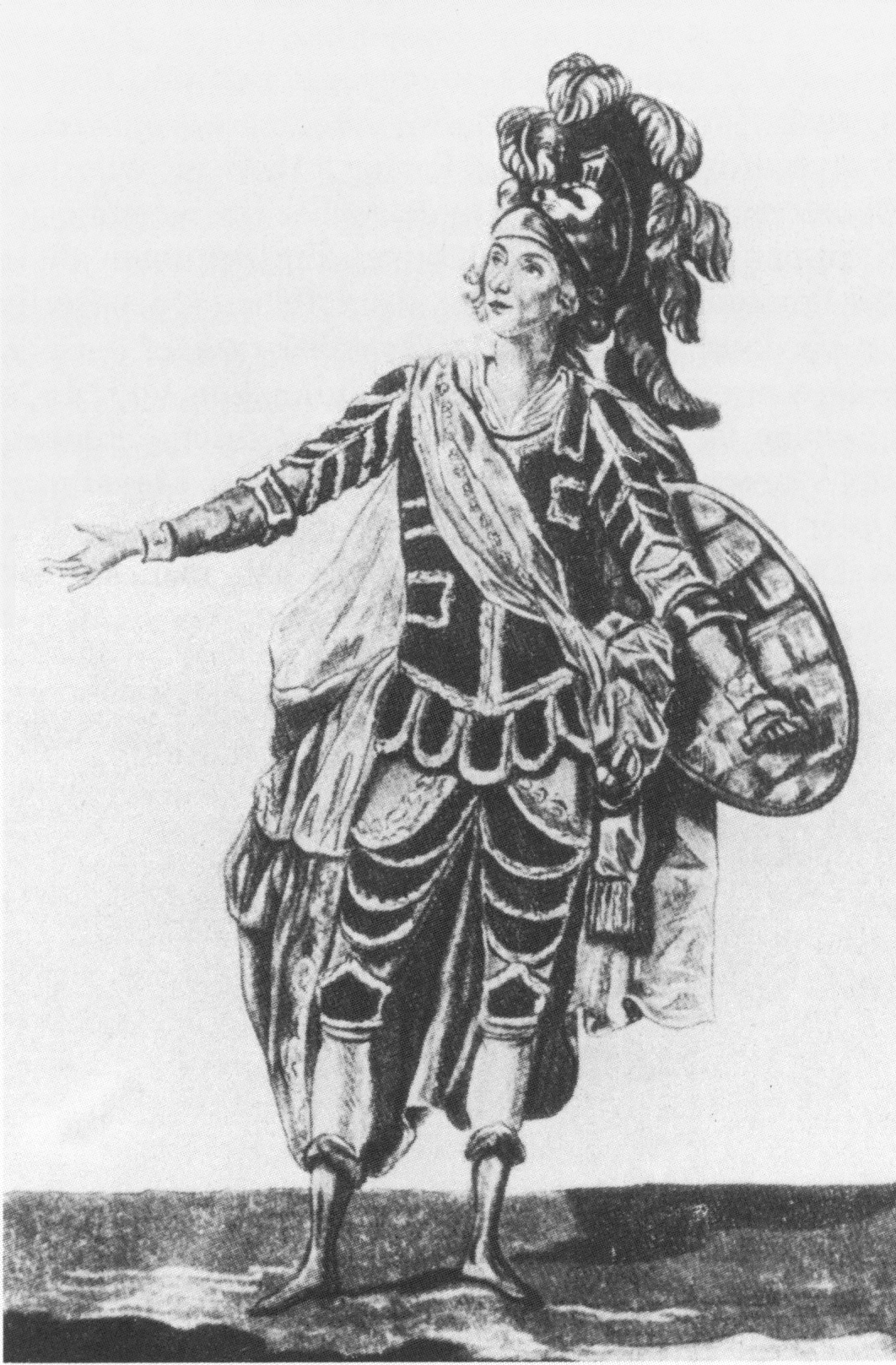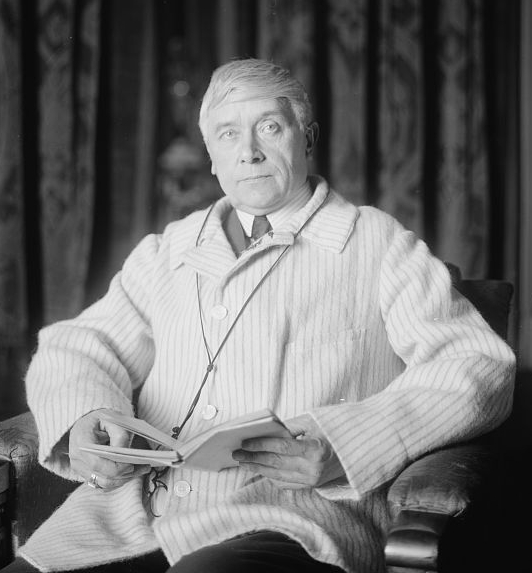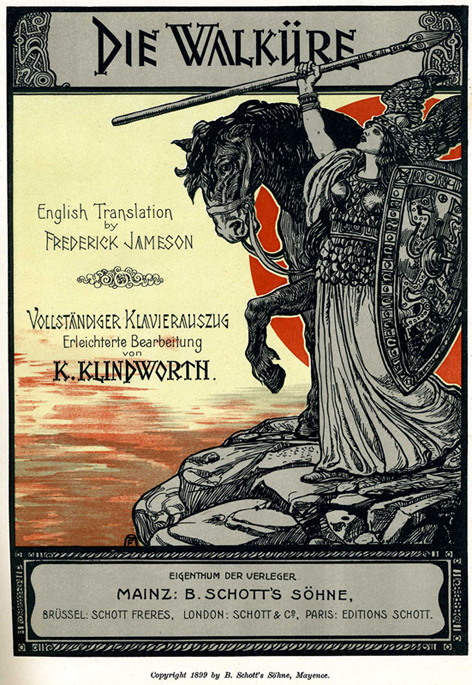|
Rose Féart
Rosalie Gautier (26 March 1878 – 5 October 1954), Rose Féart on stage, was a Franco-Swiss singer (soprano) and singing teacher. Biography Rose Fréart was born in Saint-Riquier. Her father was a sugar industrialist. Shortly after the birth of his daughter, he returned to his hometown of Argenton-sur-Creuse, where Rose Féart spent her entire childhood. She was introduced to music by the organist of , Anselme Picardeau, who detected the child's vocal qualities. Sent to Paris to continue her musical studies, she won the first prize of the Conservatoire de Musique in lyrical declamation on 2 August 1902, at the age of 24. Her soprano voice was noticed by the Opéra de Paris who immediately engaged her. Rose Féart became one of the most important opera singers for the great repertoire, especially in Wagnerian roles, and worked with composers of her time such as Massenet, Fauré, Debussy, César Franck, and André Caplet. Her career developed quickly, in operas and concerts, a ... [...More Info...] [...Related Items...] OR: [Wikipedia] [Google] [Baidu] |
Saint-Riquier
Saint-Riquier () is a commune in the Somme department in Hauts-de-France in northern France. Geography The commune is situated northeast of Abbeville, on the D925 and D32 crossroads. Abbey Saint-Riquier (originally ''Centula'' or ''Centulum'') gained fame for its abbey, founded about 625 by Riquier (Richarius), son of the governor of the town, when the town was within Austrasia in the Merovingian Kingdom. It was enriched by King Dagobert I and prospered in the early 9th century Carolingian Empire under the abbacy of Angilbert, son-in-law of Charlemagne. In the year 881 Northmen burned the abbey and destroyed much of what was Centula. The monastery was rebuilt in the Middle Ages on a smaller scale. The abbey was part of the diocese of Amiens in Ponthieu. The early counts of Ponthieu originally were styled ''advocatus'' of the abbey of Saint Riquier and "castellan" of Abbeville. The counts of Ponthieu enrolled their younger sons who were going into religious vocation ... [...More Info...] [...Related Items...] OR: [Wikipedia] [Google] [Baidu] |
Armide (Gluck)
''Armide'' is an opera by Christoph Willibald Gluck, set to a libretto by Philippe Quinault. Gluck's fifth production for the Parisian stage and the composer's own favourite among his works, it was first performed on 23 September 1777 by the Académie Royale de Musique in the second Salle du Palais-Royal in Paris. Background and performance history Gluck set the same libretto Philippe Quinault had written for Lully in 1686, based on Torquato Tasso's ''Gerusalemme liberata'' (''Jerusalem Delivered''). Gluck seemed at ease in facing French traditions head-on when he composed ''Armide''. Lully and Quinault were the very founders of serious opera in France and ''Armide'' was generally recognized as their masterpiece, so it was a bold move on Gluck's part to write new music to Quinault's words. A similar attempt to write a new opera to the libretto of '' Thésée'' by Jean-Joseph de Mondonville in 1765 had ended in disaster, with audiences demanding it be replaced by Lully's ori ... [...More Info...] [...Related Items...] OR: [Wikipedia] [Google] [Baidu] |
Ninon Vallin
Eugénie "Ninon" Vallin (8 September 1886 22 November 1961) was a French soprano who achieved considerable popularity in opera, operetta and classical song recitals during an international career that lasted for more than four decades. Career Eugénie Vallin was born at Montalieu-Vercieu, a small town about 30 miles east of Lyon. She studied at the Lyon Conservatoire and later in Paris. At first she had no intention of performing opera, preparing herself for a career on the concert platform. In 1911 she was chosen by Claude Debussy to sing the part of the celestial voice in the first performance of his ''Le martyre de Saint Sébastien''. She continued her association with Debussy, giving the première of his ''Trois poèmes de Stéphane Mallarmé'' in 1914 at the Salle Gaveau in Paris, accompanied by the composer. She also worked extensively with other contemporary composers, including Albert Roussel, Joaquín Nin-Culmell, and Reynaldo Hahn; the latter two accompanied her i ... [...More Info...] [...Related Items...] OR: [Wikipedia] [Google] [Baidu] |
Théâtre Du Châtelet
The Théâtre du Châtelet () is a theatre and opera house, located in the place du Châtelet in the 1st arrondissement of Paris, France. One of two theatres (the other being the Théâtre de la Ville) built on the site of a ''châtelet'', a small castle or fortress, it was designed by Gabriel Davioud at the request of Baron Haussmann between 1860 and 1862. Originally named the Théâtre Impérial du Châtelet, it has undergone remodeling and name changes over the years. Currently it seats 2,500 people. Description The theatre is one of two apparent twins constructed along the quays of the Seine, facing each other across the open Place du Châtelet. The other is the Théâtre de la Ville. Their external architecture is essentially Palladian entrances under arcades, although their interior layouts differ considerably. At the centre of the plaza is an ornate, sphinx-endowed fountain, erected in 1808, which commemorates Napoleon's victory in Egypt. Origins The Théâtre Imp ... [...More Info...] [...Related Items...] OR: [Wikipedia] [Google] [Baidu] |
La Damoiselle élue
''La Damoiselle élue'' (''The Blessed Damozel''), L. 62, is a cantata for soprano soloist, 2-part children's choir, 2-part female (contralto) choir (with contralto solo), and orchestra, composed by Claude Debussy in 1887–1888 based on a text by Dante Gabriel Rossetti. It premiered in Paris in 1893. History Claude Debussy was interested in the symbolist movement and later took inspiration from a poem by Stéphane Mallarmé for his '' Prélude à l'après-midi d'un faune'' (1894). Reading an anthology of English poetry translated by Gabriel Sarrazin, "Poètes modernes d’Angleterre" (1883) gave Debussy the idea of composing a cantata on the poem "The Blessed Damozel" (1850) by Pre-Raphaelite poet and painter Dante Gabriel Rossetti.Caroline RaeLa Damoiselle élue, Claude Debussy website of the London Philharmonic Orchestra, accessdate 13 June 2016. Debussy had probably not seen Rossetti's painting of the same title, but other pre-Raphaelite illustrations with a focus on "a n ... [...More Info...] [...Related Items...] OR: [Wikipedia] [Google] [Baidu] |
Criquebeuf-en-Caux
Criquebeuf-en-Caux (, literally ''Criquebeuf in Caux'') is a commune in the Seine-Maritime department in the Normandy region in northern France. Geography The commune is centered on a farming village situated in the Pays de Caux, some northeast of Le Havre, at the junction of the D211 and D940 roads. The commune's cliffs face the English Channel. Heraldry Population Places of interest * The remains of the motte of a feudal castle. * The church of St.Martin, dating from the sixteenth century. See also *Communes of the Seine-Maritime department The following is a list of the 708 communes of the French department of Seine-Maritime. The communes cooperate in the following intercommunalities (as of 2020):Communes o ... [...More Info...] [...Related Items...] OR: [Wikipedia] [Google] [Baidu] |
Maggie Teyte
Dame Maggie Teyte (born Margaret Tate; 17 April 188826 May 1976) was an English operatic soprano and interpreter of French art song. Early years Margaret Tate was born in Wolverhampton, England, one of ten children of Jacob James Tate, a successful wine and spirit merchant and proprietor of public houses and later lodgings. Her parents were keen amateur musicians and opera enthusiasts. She was the sister of composer James W. Tate. Her family moved to London in 1898, where Teyte attended St. Joseph's Convent School, Snow Hill, and later studied at the Royal School of Music. Career Her father died in 1903 and she went to Paris the following year to become a pupil of the celebrated tenor Jean de Reszke. She made her first public appearance in Paris in 1906 when she sang Cherubino in ''The Marriage of Figaro'' and Zerlina in ''Don Giovanni'', both conducted by Reynaldo Hahn. Her professional debut took place at the Opera House in Monte Carlo on 1 February 1907, where she perform ... [...More Info...] [...Related Items...] OR: [Wikipedia] [Google] [Baidu] |
Pelléas Et Mélisande (opera)
''Pelléas et Mélisande'' (''Pelléas and Mélisande'') is an opera in five acts with music by Claude Debussy. The French libretto was adapted from Maurice Maeterlinck's symbolist play of the same name. It premiered at the Salle Favart in Paris by the Opéra-Comique on 30 April 1902; Jean Périer was Pelléas and Mary Garden was Mélisande, conducted by André Messager, who was instrumental in getting the Opéra-Comique to stage the work. The only opera Debussy ever completed, it is considered a landmark in 20th-century music. The plot concerns a love triangle. Prince Golaud finds Mélisande, a mysterious young woman, lost in a forest. He marries her and brings her back to the castle of his grandfather, King Arkel of Allemonde. Here Mélisande becomes increasingly attached to Golaud's younger half-brother Pelléas, arousing Golaud's jealousy. Golaud goes to excessive lengths to find out the truth about Pelléas and Mélisande's relationship, even forcing his own child, Ynio ... [...More Info...] [...Related Items...] OR: [Wikipedia] [Google] [Baidu] |
Götterdämmerung
' (; ''Twilight of the Gods''), WWV 86D, is the last in Richard Wagner's cycle of four music dramas titled (''The Ring of the Nibelung'', or ''The Ring Cycle'' or ''The Ring'' for short). It received its premiere at the on 17 August 1876, as part of the first complete performance of the whole work. The title is a translation into German of the Old Norse phrase ', which in Norse mythology refers to a prophesied war among various beings and gods that ultimately results in the burning, immersion in water, and renewal of the world. As with the rest of the ''Ring'', however, Wagner's account diverges significantly from these Old Norse sources. Composition Roles Synopsis Prologue Prelude to the Prologue Scene 1 The three Norns, daughters of Erda, the goddess of Nature, gather beside Brünnhilde's rock, weaving the Rope of Destiny. From it they read of the past, the present, and of the future when Walhalla will be set on fire and the end of the gods will come ... [...More Info...] [...Related Items...] OR: [Wikipedia] [Google] [Baidu] |
Aida
''Aida'' (or ''Aïda'', ) is an opera in four acts by Giuseppe Verdi to an Italian libretto by Antonio Ghislanzoni. Set in the Old Kingdom of Egypt, it was commissioned by Cairo's Khedivial Opera House and had its première there on 24 December 1871, in a performance conducted by Giovanni Bottesini. Today the work holds a central place in the operatic canon, receiving performances every year around the world; at New York's Metropolitan Opera alone, ''Aida'' has been sung more than 1,100 times since 1886. Ghislanzoni's scheme follows a scenario often attributed to the French Egyptologist Auguste Mariette, but Verdi biographer Mary Jane Phillips-Matz argues that the source is actually Temistocle Solera. Elements of the opera's genesis and sources Isma'il Pasha, Khedive of Egypt, commissioned Verdi to write an opera to celebrate the opening of the Suez Canal, but Verdi declined. However, Auguste Mariette, a French Egyptologist, proposed to Khedive Pasha a plot for a celebrato ... [...More Info...] [...Related Items...] OR: [Wikipedia] [Google] [Baidu] |
Die Walküre
(; ''The Valkyrie''), WWV 86B, is the second of the four music dramas that constitute Richard Wagner's '' Der Ring des Nibelungen'' (English: ''The Ring of the Nibelung''). It was performed, as a single opera, at the National Theatre Munich on 26 June 1870, and received its first performance as part of the ''Ring'' cycle at the Bayreuth Festspielhaus on 14 August 1876. As the ''Ring'' cycle was conceived by Wagner in reverse order of performance, ''Die Walküre'' was the third of the four texts to be written, although Wagner composed the music in performance sequence. The text was completed by July 1852, and the music by March 1856. Wagner largely followed the principles related to the form of musical drama, which he had set out in his 1851 essay '' Opera and Drama'' under which the music would interpret the text emotionally, reflecting the feelings and moods behind the work, using a system of recurring leitmotifs to represent people, ideas, and situations rather than the co ... [...More Info...] [...Related Items...] OR: [Wikipedia] [Google] [Baidu] |
Lohengrin (opera)
''Lohengrin'', WWV 75, is a Romantic opera in three acts composed and written by Richard Wagner, first performed in 1850. The story of the eponymous character is taken from medieval German romance, notably the '' Parzival'' of Wolfram von Eschenbach, and its sequel ''Lohengrin'', itself inspired by the epic of '' Garin le Loherain''. It is part of the Knight of the Swan legend. The opera has inspired other works of art. King Ludwig II of Bavaria named his castle Neuschwanstein Castle after the Swan Knight. It was King Ludwig's patronage that later gave Wagner the means and opportunity to complete, build a theatre for, and stage his epic cycle '' Der Ring des Nibelungen''. He had discontinued composing it at the end of Act II of ''Siegfried'', the third of the ''Ring'' tetralogy, to create his radical chromatic masterpiece of the late 1850s, ''Tristan und Isolde'', and his lyrical comic opera of the mid-1860s, ''Die Meistersinger von Nürnberg''. The most popular and recogn ... [...More Info...] [...Related Items...] OR: [Wikipedia] [Google] [Baidu] |






